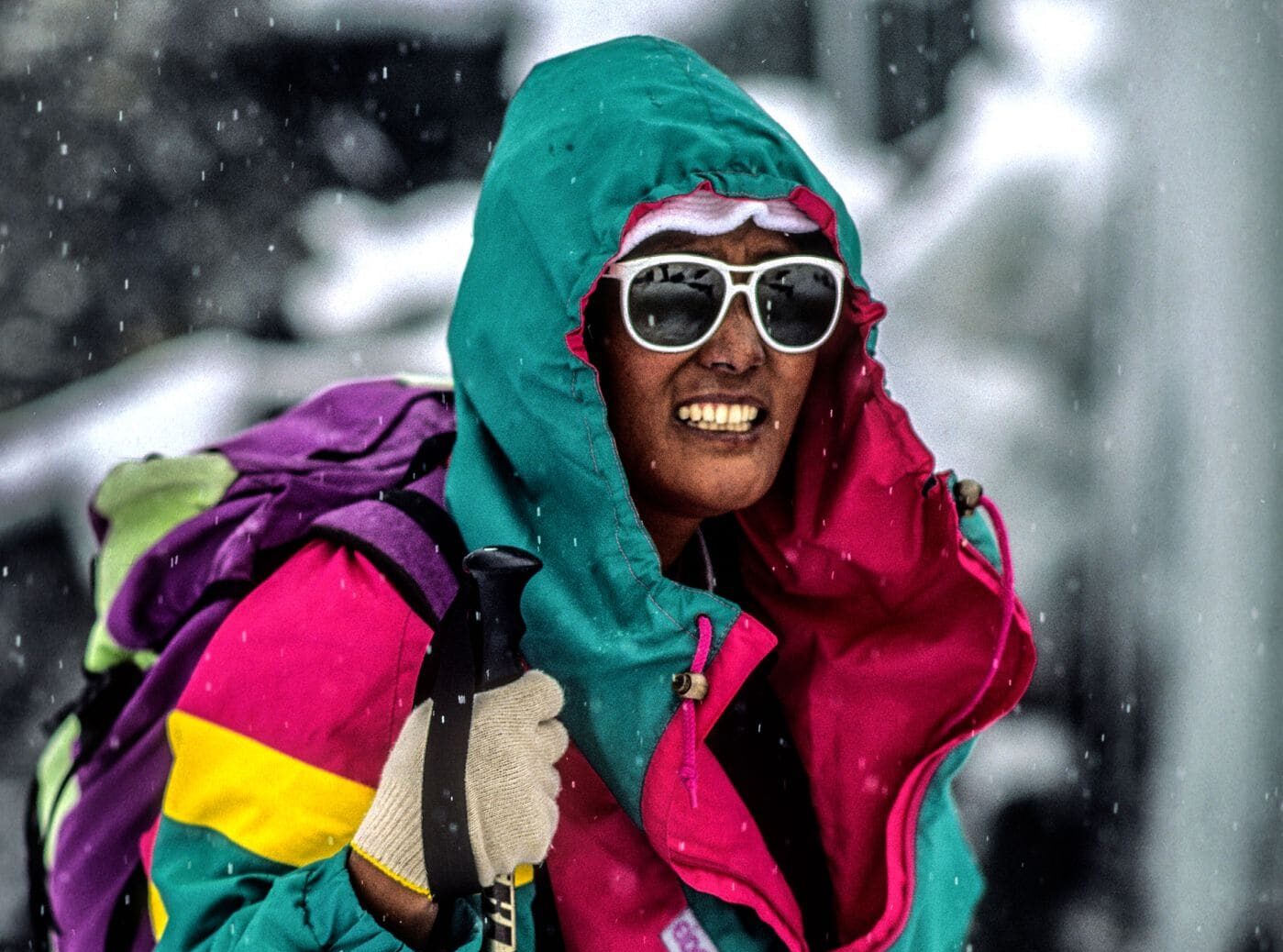Two Sherpa women who made history on Everest are being honored in different ways.
The U.S. Geological Survey announced last week that a crater at the Moon’s south pole will bear the name of Nepal’s first female summiter, Pasang Lhamu Sherpa. The International Astronomical Union, in charge of astronomical nomenclature, previously approved the Lhamu Crater.
Triumph and tragedy
Pasang Lhamu Sherpa summited Everest in 1993 but didn’t make it down alive. The wife of the powerful Lhakpa Sonam Sherpa, owner of Thamserku Trekking, she had attempted Everest three times before, striving to achieve this Nepalese first.
She finally summited on April 22, 1993 at 2:30 pm, together with five sherpas. One of them, Sonam Tshering, had shown signs of sickness on the way up. On the way down, exhausted and in worsening weather, she and Sonam Tsering became separated from the others. They stopped at the South Col, where they ran out of oxygen and finally perished. Read ExplorersWeb’s profile of her here.

Statue of Pasang Lhamu in Kathmandu. Photo: Wikipedia
Pasang Lhamu became a national heroine and a source of inspiration for local female climbers. In addition to the Moon crater, she has a 7,315m peak and a road named after her in Nepal.
Lhakpa Sherpa and her lifelong climb
Lhakpa Sherpa, the only Nepalese woman to have summited Everest 10 times, stars in a Netflix documentary released worldwide at the end of July. She has indeed had a life worthy of a documentary, and not just because of her Everest summits. Although the film’s title is Mountain Queen, Lhakpa has not enjoyed a life of royalty. Rather, she has distinguished herself by also overcoming ordinary hardships — a marginal education, surviving an abusive partner, and raising her children as a single immigrant mother in the U.S.
The film suggests that life is finally becoming less hardscrabble for the 50-year-old Lhakpa. She has started a foundation to promote climbing among Nepalese women and hopes her two daughters become mountain guides. According to her latest Instagram posts, she might even still go for an 11th Everest summit.





